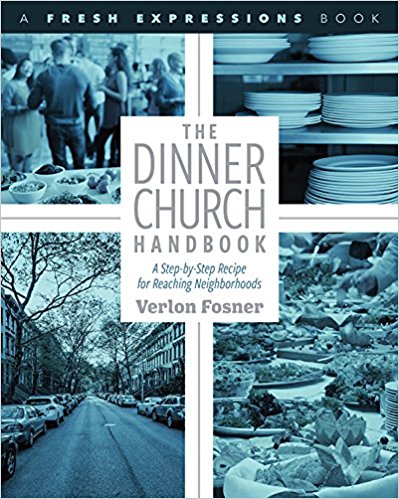 I just finished reading The Dinner Church Handbook: A Step-by-Step Recipe for Reaching Neighborhoods. As an organic, missional approach to creating a neighborhood experience where gospel conversations can take place, the concept of the book rates a 5 star. As a book that fulfills what is promised in its title it rates a 3 star.
I just finished reading The Dinner Church Handbook: A Step-by-Step Recipe for Reaching Neighborhoods. As an organic, missional approach to creating a neighborhood experience where gospel conversations can take place, the concept of the book rates a 5 star. As a book that fulfills what is promised in its title it rates a 3 star.
The Dinner Church as an evangelizing and congregationalizing strategy takes the concept of house church into the community and refocuses it as a neighborhood church. It is highly relational which fits the generations “Y” and “Z”. Since any movement of Christianity tends to long-term have an upwardly socioeconomic mobility trend, it a good to have a significant focus on lower income households—although the concept is not solely for these households.
The metaphor of the Lord’s Supper/Last Supper and the early church pattern is powerful and worthy of the dinner church motif. Making dinner churches/neighborhood congregations focus on all of us sinners—some redeemed and some not yet redeemed—is a solid idea of getting beyond the captivity of the intra-church culture.
Liminality of the people in-between paganism and Christianity is a strong concept of engaging those who are spiritually seeking, but may have bad perspectives about church and church people. The intersection of the household (oikos) and the community context (polis) is powerful.
The comments about size—up to 150 people—can be recast as an approach that reaches up to 50 households. I like this. It flies in the face of all the efforts to get congregations to break the 200 barrier, rather than to start a new congregational expression.
The downside is the book itself. It is written primarily from the perspective of a planter of dinner churches, and speaks to one perspective on how this is done. It does not fulfill the subtitle of “A Step-by-Step Recipe for Reaching Neighborhoods.” It is more about the theology, philosophy, focus, and some strategies for the dinner church. Too many comparisons are dichotomous in the spirit of “this way was/is bad, our way is good.”
I finally wrote in the margin of one page, “The book has a reckless use of the word ‘most’.” This is a common tactics of preachers who are using a persuasion approach that does not necessarily have any empirical evidence to back it up, overgeneralizes, and basically says, “I’m not them!” Now, I have not done in research myself on the use of the word “most” in the book, but if I were like the author I would say something like “Most of comparisons the author makes are unsubstantiated and only represent anecdotal research that may be correct, but seem implausible by the number of times this approach is used.”
Despite these limitations, if you are a careful and thorough thinker, and seeking information on a great missional model, you ought to consider buying and reading this book. I plan to do more research on this approach, and will likely recommend some pilot projects among the congregations with whom I work and minister.

